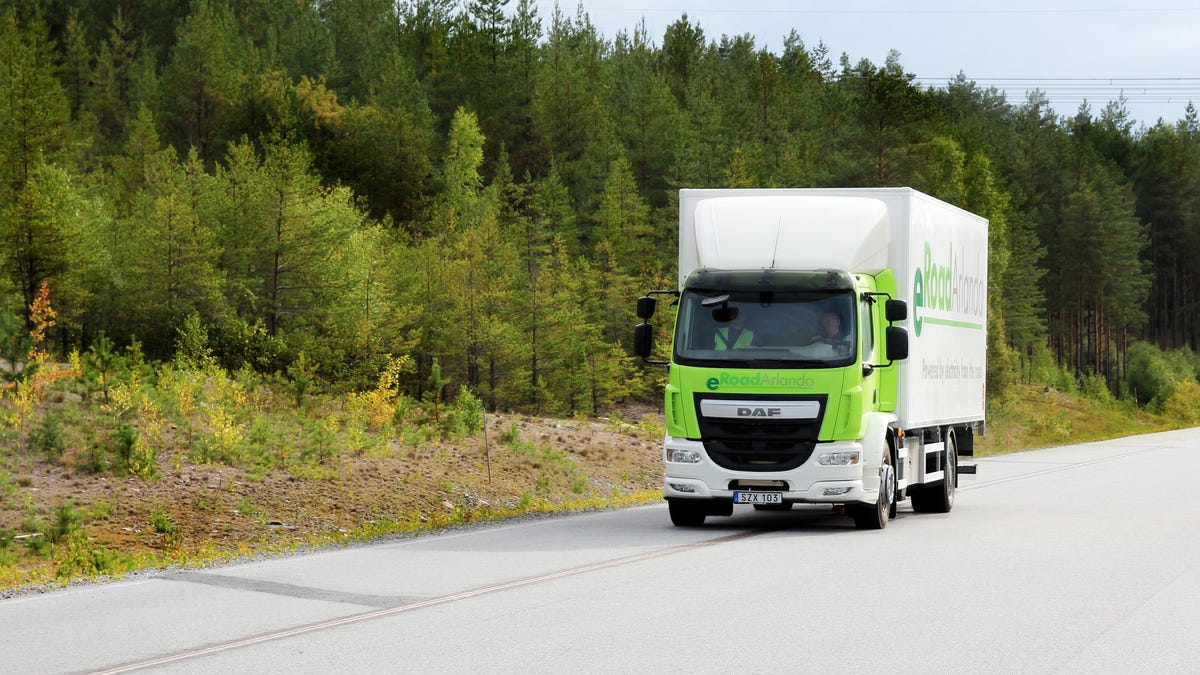This EV-charging road in Sweden works like a slot car track
It's a clever way to keep EVs from losing too much charge throughout the day.

Stopping to charge up your electric vehicle wastes a fair bit more time than stopping to top off a gas tank. So why bother stopping at all?
Sweden has opened up what The Guardian is calling the world's first stretch of electrified road. While it's just a proof of concept for now, this 1.2-mile stretch of juiced-up road has the capability to provide an EV with charge as it moves along.
How it works is pretty straightforward. There's a metal strip embedded in the road that provides power. An electric vehicle will need a movable arm to deploy and contact the strip, which will provide the circuit necessary to charge the car's batteries. If the car changes lanes, the arm disconnects. It's similar to how slot cars receive their power.
All the jolty bits are deep within the rails, so pedestrians won't have to worry about being electrocuted.
Don't think you'll get free electrons, though. The road's system is capable of figuring out how much energy each vehicle uses, so it could then send a bill to the owner or use some sort of connected method to automatically debit a person's account. This part is still a bit unclear.
Some benefits of this electrified road could be seen immediately. With consistent charging, batteries wouldn't need to be as large, and reduced battery cost should equate to reduced vehicle costs overall. It's also more convenient than stopping for a charge.
Of course, there are some downsides to this technology. First, you have to tear up parts of the road, which is more frustrating to drivers than the construction required to build standalone chargers in parking lots. There's also the matter of the arm, which would require automakers to add yet another component to their vehicles in order to take advantage of this charging method.
Sweden hopes to unchain itself from fossil fuels by 2030, and electrifying transportation is a key part of that strategy. At a cost of 1 million euros ($1.2 million) per kilometer of electrified road, it's not cheap, but the company in charge of the road estimates that it's 50 times cheaper than a kilometer of cable-car lines. At the absolute bare minimum, this is a much more elegant solution than dangling wires above the roadway.

